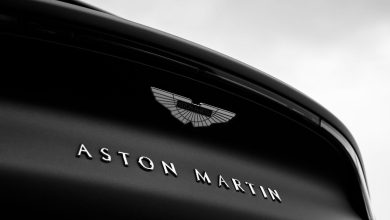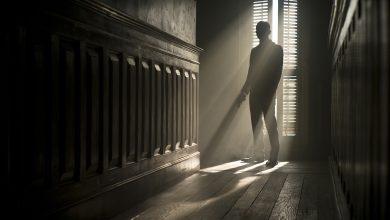Why James Bond Switched from a PPK to a P99 and Back to a PPK?

James Bond, the suave and iconic spy, is known for his impeccable style, captivating charisma, and a collection of high-tech gadgets. Among these gadgets, his choice of sidearm has always held a special place in the hearts of Bond enthusiasts. Over the years, Bond’s firearm of choice has transitioned between the Walther PPK and the Walther P99. This article explores the reasons behind these transitions and the significance of each firearm in Bond’s arsenal. From the modern upgrades of the P99 to the nostalgic return to the classic PPK, we delve into the evolution of Bond’s sidearm selection and the impact it has had on the character and the franchise.
Key Takeaways
- The transition from the Walther PPK to the P99 was driven by the need for a modern upgrade, offering increased firepower, ambidextrous design, improved ergonomics, and the incorporation of modern technologies.
- The return to the PPK showcased the significance of tradition, nostalgia, and character consistency in the Bond franchise, reinforcing the iconic status of the firearm and satisfying fan expectations.
- The PPK underwent adaptations when Bond returned to it, including a caliber upgrade, improved materials and construction, and the incorporation of modern features while retaining its classic design.
- The transition from the PPK to the P99 and back to the PPK within the James Bond franchise represents a delicate balance between modernization and tradition. While the P99 introduced advancements and catered to the changing landscape of espionage, the return to the PPK paid homage to the character’s origins and satisfied fan expectations. The choice of firearm in the Bond franchise is not merely a prop but a reflection of Bond’s personality, style, and adaptability as a spy. From the classic elegance of the PPK to the modern enhancements of the P99, each firearm has played a significant role in shaping Bond’s image and captivating audiences worldwide. Ultimately, the evolution of Bond’s sidearm selection showcases the franchise’s ability to blend nostalgia with innovation, ensuring that the character of James Bond remains timeless and relevant in the ever-evolving world of espionage.
Haut du formulaire
As one of the most iconic fictional characters in cinematic history, James Bond is synonymous with sophistication, charm, and a wide range of high-tech gadgets. Among these gadgets, his choice of sidearm has always been a subject of fascination for Bond enthusiasts. Over the years, Bond has switched between different firearm models, notably the Walther PPK and the Walther P99. In this article, we delve into the reasons behind Bond’s transitions and explore the significance of each firearm in his arsenal.
The Transition from PPK to P99: A Modern Upgrade
The Evolution of James Bond’s Firearms
Since his debut in Ian Fleming’s novels in 1953, James Bond has relied on the Walther PPK as his trusty sidearm. The PPK, with its sleek design and compact size, perfectly complemented Bond’s covert missions. It became an iconic symbol of his character, and fans associated the PPK with his suave persona.
However, as technology advanced and the demands of espionage evolved, Bond’s arsenal required an upgrade. This led to the introduction of the Walther P99 in the 1997 film “Tomorrow Never Dies.” The P99 offered significant improvements over the PPK, incorporating modern features and advancements in firearm technology.
Advantages of the Walther P99
The switch to the P99 brought several advantages for Bond’s missions:
- Increased firepower: The P99 had a larger magazine capacity, allowing Bond to carry more rounds without reloading frequently. This proved beneficial in intense combat situations.
- Ambidextrous design: The P99 featured ambidextrous controls, making it easier for Bond to handle the firearm in both hands. This versatility enhanced his ability to engage in fast-paced action sequences.
- Improved ergonomics: The P99 boasted a customizable grip, enabling Bond to tailor the weapon to his hand size and personal preferences. This ergonomic enhancement enhanced his accuracy and overall performance.
- Incorporation of modern technologies: The P99 introduced innovations like a decocking mechanism, a striker-fired trigger system, and an integral accessory rail for attaching tactical lights or laser sights. These features provided Bond with enhanced functionality and versatility in the field.
The Return to the PPK: Nostalgia and Tradition
Bond’s Reunion with the Classic Firearm
After his brief fling with the P99, Bond reverted to his beloved Walther PPK in the 2006 film “Casino Royale,” marking Daniel Craig’s debut as the iconic spy. The decision to return to the PPK was driven by several factors, highlighting the significance of tradition and nostalgia in the Bond franchise.
Symbolism and Character Consistency
- Iconic status: The PPK holds an iconic status in the Bond series, representing a historical connection to the character’s origins. Reintroducing the PPK allowed the filmmakers to pay homage to the classic Bond while ensuring consistency with the established image.
- Character association: The PPK became synonymous with Bond’s character traits, including sophistication, elegance, and style. By reverting to the PPK, the filmmakers reinforced these qualities and maintained the essence of the character.
- Fan expectations: Bond enthusiasts had grown accustomed to seeing the PPK as Bond’s signature firearm. The return to the PPK met the expectations of the fanbase and contributed to the franchise’s longevity.
Adaptation and Modernization
While the return to the PPK was a nostalgic choice, the firearm underwent some adaptations to suit the modern era:
- Caliber upgrade: In the recent films, the PPK was reimagined chambered in the more powerful .380 ACP (Automatic Colt Pistol) caliber, providing Bond with increased stopping power compared to the original .32 ACP version.
- Improved materials and construction: The modern PPK featured enhancements in materials and construction techniques, ensuring higher durability and reliability in the field.
- Incorporation of modern features: Despite maintaining the classic design, the modern PPK integrated some of the advancements seen in the P99, such as an accessory rail and improved ergonomics, to enhance Bond’s performance.
FAQ: Frequently Asked Questions
1. Why did James Bond switch from the PPK to the P99 in the first place?
The transition from the PPK to the P99 in the James Bond franchise was primarily driven by the need for a modern upgrade. The PPK, while iconic and reliable, had limitations in terms of firepower, ergonomics, and technological advancements. The introduction of the P99 allowed Bond to carry more rounds, benefit from an ambidextrous design, and take advantage of modern features such as a striker-fired trigger system and an accessory rail. The switch to the P99 reflected the changing landscape of espionage and showcased Bond’s ability to adapt to evolving threats.
2. Did the P99 outperform the PPK in terms of functionality?
Yes, the P99 offered significant improvements in functionality compared to the PPK. With a larger magazine capacity, the P99 allowed Bond to carry more ammunition, providing an advantage in extended firefight situations. The ambidextrous design of the P99 made it easier for Bond to handle the firearm in various scenarios, enhancing his versatility and combat effectiveness. Additionally, the P99 incorporated advancements such as a decocking mechanism and improved ergonomics, enhancing Bond’s accuracy and overall performance in the field.
3. Why did James Bond ultimately return to the PPK after using the P99?
Bond’s return to the PPK after his stint with the P99 was primarily driven by symbolism, character consistency, and fan expectations. The PPK held an iconic status in the Bond franchise, representing the historical connection to the character’s origins. By reverting to the PPK, the filmmakers paid homage to the classic Bond and reinforced the sophistication, elegance, and style associated with the character. Additionally, Bond enthusiasts had grown accustomed to seeing the PPK as Bond’s signature firearm, and the return to the PPK met their expectations, ensuring continuity and the franchise’s longevity.
4. Did the PPK undergo any changes when James Bond returned to it?
Yes, when James Bond returned to using the PPK, the firearm underwent some adaptations to suit the modern era. One significant change was the caliber upgrade. The modern PPK was reimagined chambered in the more powerful .380 ACP caliber instead of the original .32 ACP version. This caliber upgrade provided Bond with increased stopping power, making the PPK more effective in combat situations. Additionally, the modern PPK featured improved materials and construction techniques, ensuring higher durability and reliability in the field. The firearm also incorporated some modern features, such as an accessory rail and improved ergonomics, further enhancing Bond’s performance while retaining the classic design that fans had come to associate with the character.
5. Are there any other firearm models that James Bond has used besides the PPK and P99?
Yes, in addition to the PPK and P99, James Bond has utilized various other firearm models throughout the franchise’s history. For example, in the 1974 film “The Man with the Golden Gun,” Bond temporarily used the golden gun, a custom-made firearm assembled from seemingly innocuous objects. The golden gun became one of the most memorable and unique weapons associated with the character. Furthermore, in the Daniel Craig era of Bond films, other firearms like the HK416 assault rifle and the Glock 17 pistol have made appearances, showcasing Bond’s adaptability and reliance on different tools depending on the mission requirements.
6. Who makes the Walther PPK and P99 firearms?
The Walther PPK and P99 firearms are manufactured by Carl Walther GmbH Sportwaffen, a German firearms manufacturer. Walther has a long-standing reputation for producing high-quality handguns and is known for their precision, reliability, and innovative designs. The company’s collaboration with the James Bond franchise has solidified their association with the iconic spy character and has further elevated their global recognition and appeal among firearm enthusiasts.
7. Are the Walther PPK and P99 firearms available for civilian purchase?
Yes, both the Walther PPK and P99 firearms are available for civilian purchase, subject to local laws and regulations regarding firearm ownership. These firearms have gained popularity not only because of their association with James Bond but also due to their well-established reputation for quality and performance. Many firearm enthusiasts and collectors seek to own a piece of the Bond legacy by acquiring these iconic handguns.
8. What impact did the transition from the PPK to the P99 have on the Bond franchise?
The transition from the PPK to the P99 had a significant impact on the Bond franchise. It symbolized the evolution of the character and the need to adapt to changing times. The introduction of the P99 breathed new life into Bond’s arsenal, attracting a new generation of fans and showcasing the franchise’s ability to stay relevant. It also opened up opportunities for exciting action sequences and showcased Bond’s skills with a more advanced firearm. Ultimately, the transition highlighted the dynamic nature of the Bond character and his ability to embrace innovation while preserving the core elements that make him an enduring cultural icon.
9. How did the choice of firearm reflect James Bond’s character?
The choice of firearm for James Bond reflects his character as a sophisticated, stylish, and resourceful spy. The PPK, with its compact size and sleek design, emphasizes Bond’s ability to blend seamlessly into any situation. It represents his reliance on intelligence, skill, and precision rather than brute force. The P99, on the other hand, demonstrates Bond’s adaptability and willingness to embrace modern technology when necessary. Both firearms embody Bond’s commitment to excellence, attention to detail, and preparedness for any challenge he may face in the field.
10. Will James Bond continue to switch firearms in future films?
As the James Bond franchise continues to evolve, it is possible that Bond may switch firearms in future films. The choice of firearm is often influenced by various factors, including storytelling, character development, and real-world advancements in firearm technology. While the PPK holds a special place in Bond’s legacy, future films may explore different firearm models that align with the ever-changing landscape of espionage and the demands of contemporary action cinema. Whatever the choice may be, it is certain that the firearm Bond wields will continue to be an essential element in defining his character and thrilling audiences around the world.
Conclusion
The transition from the PPK to the P99 and back to the PPK within the James Bond franchise reflects a delicate balance between modernization and nostalgia. While the P99 offered technological advancements and increased capabilities, the return to the PPK celebrated tradition, maintained character consistency, and satisfied the expectations of Bond enthusiasts worldwide. Bond’s choice of firearm continues to captivate audiences, demonstrating the enduring appeal and significance of every aspect of the iconic spy’s persona.








